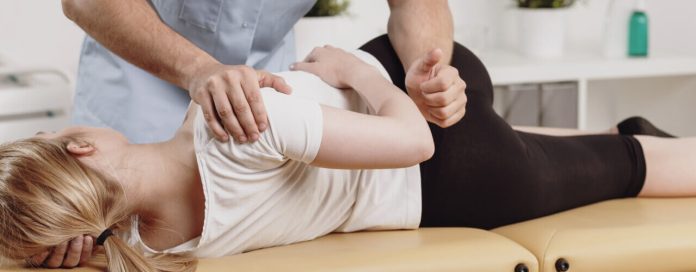Estimated reading time: 0 minutes
The most common cause of right-sided lower back pain is muscle strain.
Muscle strains occur when a muscle is extended beyond its normal limit, resulting in overstretching or tearing of the muscle fibers. Despite the fact that this type of injury is typically minor and resolves without complications 1, the pain can be excruciating and the back can become extremely stiff.
A back muscle strain is typically the result of an indirect injury 1, 2, such as wielding a golf club or twisting your back to pick up a child from the floor. In addition to the muscle, you may also strain the tendon (the portion of the muscle that attaches to the bone).
Care for back muscle strain oneself
You can attempt any of the following home remedies to alleviate the symptoms of your lower back muscle strain:
- Use both heat and chill. Cold therapy can aid in reducing the inflammation, edema, and pain that immediately follow an injury. Once the pain has subsided, use heat therapy to dilate the blood vessels and increase blood flow to the injured area, thereby delivering oxygen and healing nutrients.
- Consider a topical treatment. Apply a gel or ointment for pain relief to the affected area. The topical application of salicylic acid and/or menthol may relieve muscle discomfort. These medications are available over-the-counter.
- Relax your lower back with a massage. The release of pain-relieving chemicals (endorphins) can be stimulated by a light massage of the lower right back, which can also relieve stiff muscles.
- Gently move your back muscles. When a muscle is strained, the tiny blood vessels rupture, resulting in an inadequate blood supply to the affected tissues. 1 Additionally, if you lie on your back without moving, less blood flow and oxygen will reach the affected tissues. Warm the muscles with heat, and then perform moderate stretches to increase blood flow and stimulate the formation of new blood capillaries in the muscle.
- Maintain a natural lumbar curve. Maintain your natural spinal alignment by maintaining correct seated, standing, and/or lying down posture. Providing adequate support for the inward curve of your lower spine will reduce stress on your injured back muscles and foster a more favourable healing environment.
- Utilise a lumbar brace. If you are in excruciating pain and unable to move your back, consider wearing a lumbar stabilising brace for the first two days following your injury. A brace will aid in preventing unanticipated movement while providing back support.
- Whenever feasible, walk. Walking is an excellent method for aiding muscle recuperation. Start by walking for a few minutes per hour and work your way up to lengthier walks if you are in considerable pain.
- Think about pool therapy. If the pain and stiffness are severe, warm-water exercise, also known as water therapy, may be a helpful alternative. The buoyancy of the water provides support, the warmth of the pool is beneficial to your muscles, and the resistance of the water provide you with an excellent workout without aggravating your achy lower back. Warm water walking is also beneficial for the spine.
Typically, back muscle strains recover within a few days to a few weeks. Oral over-the-counter pain medications may be beneficial when combined with the aforementioned treatments.
Consult a physician immediately if your severe pain does not improve with these treatments, worsens, increases at night, causes changes in bowel and/or urinary control, or includes other concerning symptoms. A physician can assist in ruling out serious underlying conditions, such as cancer or cauda equina syndrome, and devising an effective treatment plan.
Related-
Know more about Ayurvedic Spinal Disk & Radiculopathy Treatments.
GET IN TOUCH


Recent comments